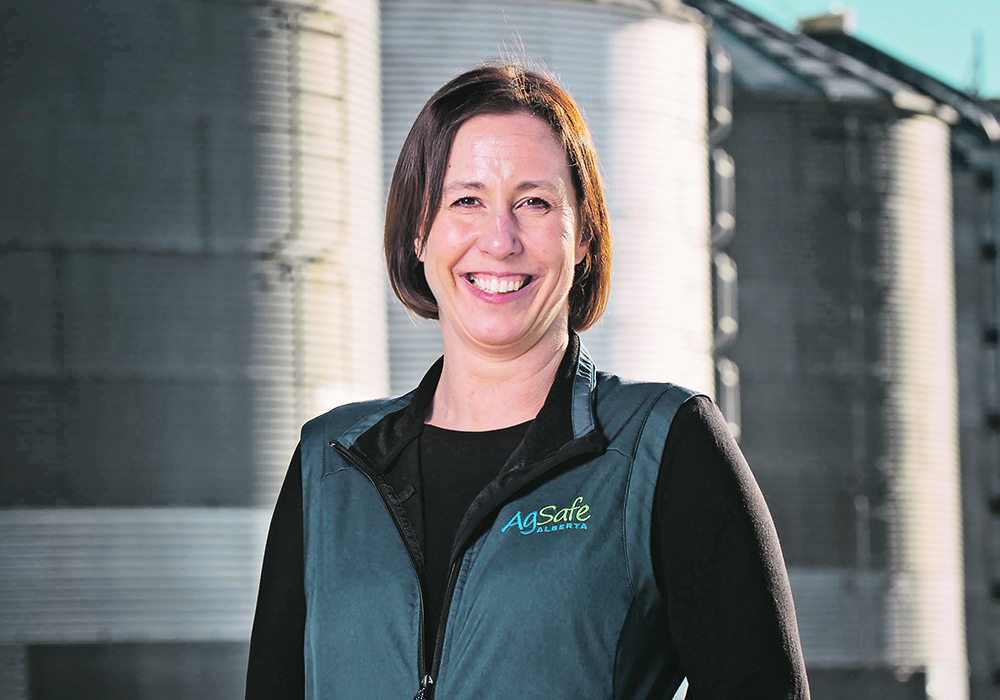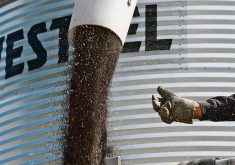Jody Wacowich often gets told at meetings about farm safety that preventing accidental deaths or injuries is a matter of common sense.
Unfortunately, common sense isn’t really that common, said Wacowich, executive director of AgSafe Alberta. That’s why her organization recently launched FARMERS CARE, a free online program whose title is an acronym detailing 11 types of hazards faced by producers.
The idea is to provide a less intimidating place for farmers to learn about such dangers than by taking a full safety program, which can be “very overwhelming. And we wanted something to help people take small chunks of safety and start to apply it … to reduce some of the risks they have on farms.”
Read Also

Rural Manitoba resources slim on natural disaster planning
A study from Brandon University’s Rural Development Institute has found that many rural and small municipalities don’t have the staff or resources to make formal climate plans against natural disaster.
The acronym stands for Fall from heights, Air quality, Roll overs, Motor vehicles, Energy isolation, Remote work, Secure loads, Chemical exposure, Animal handling, Restricted/confined space, and Electrocution.
An average of 18 people per year are killed on farms and ranches in the province, with 90 percent involving family members. Meanwhile, there were more than 1,200 claims in 2019 involving farms with coverage under the Workers’ Compensation Board-Alberta.
FARMERS CARE is aimed at producers with limited time and resources. It allows them to participate at their own pace, and it doesn’t require any previous safety knowledge or experience, said a video on AgSafe Alberta’s website.
“All that you do need is a few minutes, a computer, tablet or mobile device, and an internet connection…. There’s no pass or fail and it is not about being perfect. It’s about starting right where you are and coming up with realistic ways to make your farm or ranch a safer place.”
Each section asks producers to identify hazards and think of ways to control or reduce the risk. An AgSafe administrator will look at the responses to ensure no questions were missed, after which participants will be emailed a summary report that includes dates producers selected to begin improving safety.
“You can share this report with everyone in your farm, discuss it as a group, and post it as a reminder for your farm’s commitment to safety.”
Producers will receive a certificate for completing level one, said Wacowich.
“And we’re just in the process of building level two for sure, and then after that three and four. We wanted to kind of hit four pieces of looking at safety on the farm as part of this program.”
The 11 hazards detailed in FARMERS CARE reflect the unique nature of work on a farm or ranch. Producers tend to be jacks of all trades who do everything from handling large, strong animals at one moment to working with chemicals the next.
Their work can also involve long, irregular hours that can result in dangerous levels of fatigue, especially during the autumn harvest, said Wacowich.
“I’ve seen people on social media bragging that they’ve done 36 hours or more trying to get through harvest, and that scares me — like that’s equivalent to being quite impaired, and we’re driving pretty big, expensive equipment when we’re doing those things.”
Many producers also have family farms that can involve several generations of people.
“I mean certainly, we have the opportunity to bring our kids to work, which we wouldn’t in an urban or industrial setting and so that can be one of the challenges.”
About 11 percent of fatalities involve the children of farm owners and operators, said Wacowich.
Most family farms likely do not have the resources of operations such as feedlots that are large enough to employ human resources staff, which allows them to create and implement formal safety policies and procedures, she said.
“So, that’s why we think the FARMERS CARE program is really good because it also works for family farms and is a practical and a simple way for them to start having those conversations, and building some of those pieces on their farms, too.”
For more information or to take the program, visit www.agsafeabseed.ca/course/farmers-care-level-1.
















